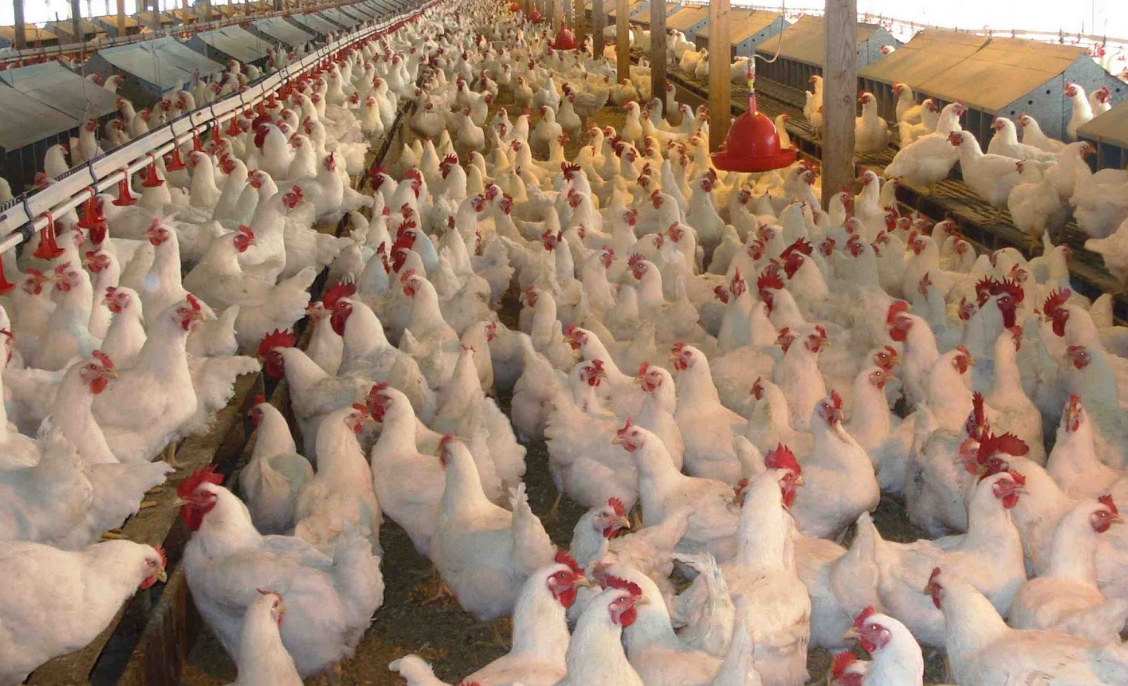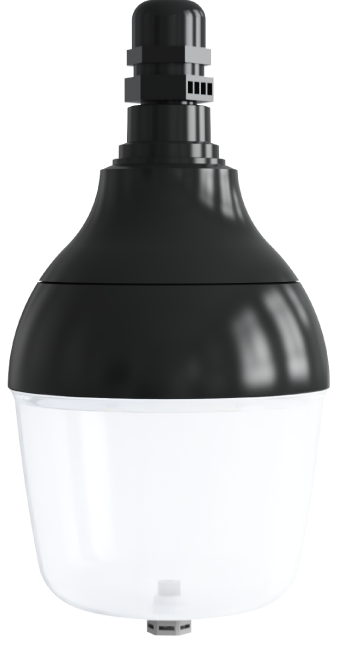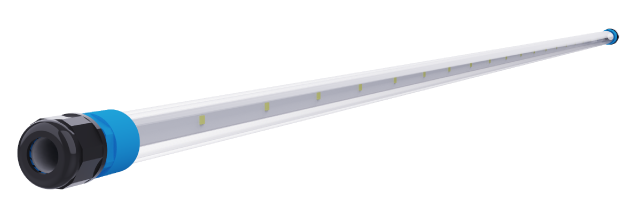Lighting in Poultry Production: Led Lights for Poultry House

Directory:
1. The Influence of Light on Poultry Production
2. Light Level Characteristics for Poultry and Livestock
3. Characteristics of Light Cycle Adjustment
4. Light Adaptation for Poultry in Artificial Lighting
5. Implementing Scientific Management of Artificial Lighting
6. Led Lights for Poultry House
The way humans perceive light is fundamentally different from how poultry do. This discrepancy leads to significant challenges when trying to apply human visual parameters to poultry production lighting. To enhance animal production efficiency and promote the healthy development of livestock and poultry, it is essential to shift from a human-centric view of lighting to one that aligns more closely with the biological lighting needs of these animals.
1. The Influence of Light on Poultry Production
Human vision operates on a single-peak distribution, whereas poultry have four peaks in their spectral sensitivity at 380 nanometers, 480 nanometers, 560 nanometers, and 630 nanometers. This means that the spectral sensitivity and requirements of poultry differ greatly from those of humans, and using human visual parameters to define poultry lighting can lead to significant discrepancies. Therefore, employing bio-optical technology to create a poultry farm lighting system is a more scientifically sound approach.
Bio-optics involves using photon energy as the fundamental unit for organisms exposed to light. Research indicates that poultry respond to photon wavelengths ranging from 350 to 750 nanometers. Both poultry and humans exhibit maximum sensitivity in the green light spectrum, but poultry are over four times more sensitive to blue light and more than twice as sensitive to red light compared to humans. Photon energy can penetrate poultry skulls and retinas, stimulating the pineal gland and hypothalamus, which in turn influences their biological clock, sexual maturity, reproductive system, and overall homeostasis. There is a sensitivity difference of over 6.000 times in the UVA spectrum between poultry and humans. Poultry have evolved to possess more cones, granting them higher visual sensitivity and the ability to see near-ultraviolet light, which aids in food and group recognition. Since poultry do not eat or reproduce at night, adjusting their light cycles can help manage their nighttime rest.
Poultry retinas contain specialized receptors for double cones, resulting in shorter image retention times and higher visual resolution frequencies. Stroboscopic light sources can create stress for poultry, so it is crucial to manage the stroboscopic index to minimize tension.
Utilizing LED artificial lighting with customizable spectra can enhance the effectiveness of artificial lighting. Providing suitable lighting for poultry can lead to increased egg production in laying hens, faster weight gain in broilers, improved blood circulation in chicks, heightened appetite, better calcium and phosphorus metabolism, enhanced immunity, increased growth rates, improved feed conversion rates, reduced feed consumption, and lower energy usage.
The impact of poultry lighting is influenced by the environmental conditions of poultry production, and this effect cannot be mitigated through bio-optical design.
2. Light Level Characteristics for Poultry and Livestock
In bio-optics, the concept of light intensity is not utilized. Instead, radiant light energy is measured in terms of photon flux density. The quantity of light in poultry lighting is referred to as the light level, with relevant specifications providing conversion values for C-PFD and lux.
Poultry has adapted to natural light but tends to prefer eating and resting in sheltered areas, avoiding direct midday sunlight, and is more active in lower light conditions. High light levels can lead to increased pecking behavior, nervousness, and abnormal behaviors, resulting in aggression among birds. Different poultry species and their growth stages require varying light levels, with breeder chickens needing higher levels of light.
When lighting poultry farms, it is essential to consider the absorption and reflection of light by the poultry house structure and the ground. For wavelengths between 400 and 750 nanometers, it is permissible to use human vision illumination to calculate certain parameters for customer convenience. However, it is crucial to recognize that the biological response to light is based on the photons of different energies, not merely the visual response of the human eye. While near-ultraviolet light can enhance reproductive hormone production and other beneficial feeding effects in poultry, its application in farming requires both manufacturers and users to possess the necessary technical expertise.
3. Characteristics of Light Cycle Adjustment
In poultry production, the light cycle refers to the duration during which the lights are illuminated. Together with the dark cycle, it forms a complete day, which aligns with the circadian rhythm of the birds. Both cycles play a crucial role in regulating the physiological traits of poultry.
Poultry have a limited number of rod cells in their retinas, rendering them unable to see in the dark. As a result, they cease eating and rest during the dark period. The light cycle influences their feeding and activity levels, while the dark cycle promotes melatonin production, enhancing immune function. Thus, establishing an appropriate light cycle is essential.
The light cycle can influence the metabolic activities of poultry and help regulate their biological clocks and gland development. Adjusting the light cycle can affect growth rates, egg production or cessation, as well as weight, egg quantity, size, and survival rates. The dark cycle also supports immune function, reproductive hormone secretion, and overall health. For instance, extending the light cycle can encourage greater feed intake in broilers, while chicks benefit from a continuous 24-hour light cycle to assist them in locating food and water.
Starting the light cycle at natural dawn is more beneficial for poultry feeding. Light cycle management allows for segmented lighting (intermittent lighting), and various methods of light cycle adjustment are referred to as artificial lighting management, which can involve gradually decreasing light during the rearing phase.
The gradual transition of light simulates natural sunrise and sunset, providing a comfortable resting environment for poultry. As prey animals, most poultry have developed heightened vigilance and superior visual resolution compared to humans. Therefore, sudden changes in lighting can induce panic. Poultry are particularly sensitive to flickering light sources, which they may perceive as threats. Consequently, the process of turning lights on and off must be gradual, and it is important to manage flicker during the dimming process as well.
4. Light Adaptation for Poultry in Artificial Lighting
To ensure an effective breeding process, it is essential to begin with chicks. By utilizing bio-optical technology that focuses on light quality, quantity, and cycles, poultry can acclimate to artificial lighting from a young age, enhancing the efficiency of these lighting systems. This light adaptation enables proactive management of artificial lighting and contributes to overall reductions in breeding costs.
5. Implementing Scientific Management of Artificial Lighting
Effective management of artificial lighting is a crucial aspect of modern poultry farming technology. This involves creating a management system that aligns with the lighting setup, prioritizing lighting management alongside factors such as poultry house design, lighting systems, temperature, humidity, ventilation, feed, feed conversion rates, disease prevention, cost control, sensor technology, and automation equipment, all aimed at maximizing economic returns..
6. Led Lights for Poultry House
6.1 Led Poultry House Lights D80

The D80 Poultry Lighting Bulb is engineered to provide a high-performance, stress-free lighting solution that supports healthy poultry growth while ensuring energy efficiency and ease of maintenance.
6.2 Led Poultry House Lights T5

T5 LED Poultry Lighting System provides solution for chickens to increase egg output, lower mortality, longer peak production period and improve animal welfare. By using intelligent poultry LED lighting system for raising chickens, it is beneficial for higher quantity and quality of eggs, maturity at a faster rate and higher standard of health, compared with way of chicken raised under traditional light sources.
6.3 Led Poultry House Lights T8

T8 LED Poultry Lighting System provides solution for chickens to increase egg output, lower mortality, longer peak production period and improve animal welfare. By using intelligent poultry LED lighting system for raising chickens, it is beneficial for higher quantity and quality of eggs, maturity at a faster rate and higher standard of health, compared with way of chicken raised under traditional light sources.